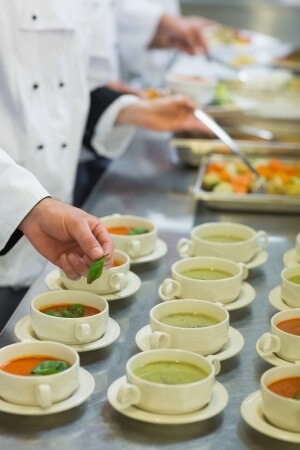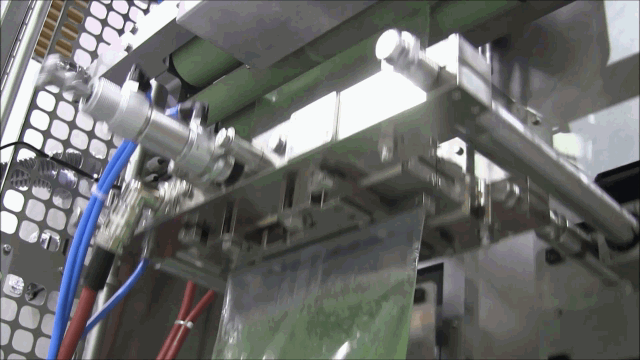Evaluating Existing VFFS Machines for Sustainable Films
Sustainable packaging materials are becoming increasingly popular, and many of today’s CPG brand teams and other stakeholders are evaluating ...
4 min read
 Emily Brogan
:
Mon, Jan 18, 2021
Emily Brogan
:
Mon, Jan 18, 2021

People have been using vessels of all forms and fashions to preserve foods and beverages prior to refrigerators. From clay pots and goat skins thousands of years ago, to the glass in 1790's and more recently, metal and rigid plastics. Food preservation is as old as humankind, and while we aren’t drinking wine from animal skins anymore, keeping foods fresh outside of the fridge is still of vital importance to feeding the world.
Demand has heated up for shelf stable goods over the last 10 months, and many producers who are canning or jarring their products are currently faced with a glaring need for this hot commodity- floor space. How can you, as a sauce, soup, or liquid product producer, add capacity and how do you find the room to innovate, if you’re simply- out of room.
The process of innovation for liquid (well, any pumpable product- even sliced pickles) is often limited by two major factors, margin and floor space. This is the nature of the beast that is any rigid packaging process. Production space is resource intensive to build, maintain and operate and facility expenses are challenging for older facilities, where utility costs can be very high.
Canned food (and jarred food) production lines are an engineering and manufacturing marvel. If you aren’t familiar, here’s a really cool video.
The process of using flexible packaging as an alternative for canned and jarred products often uses the simplest of bag style, a pillow bag, and the most reliable of forces- gravity, which costs zero dollars and plays no favorites.
When you consider the filling machines alone, Rovema’s typical VFFS machine occupies a floor space of only about 4’X4’ to 6' x 6'. This footprint size is significantly smaller than any high speed jarring or canning machine.
So, how do the speeds of a BVC 310 packaging machine for liquid relate to the speed of a high speed jarring or canning machine? Great question! With a top speed of 210 liquid packages per minute, it would take 2 VFFS machines to get roughly the same production speed, and both together still fit within the footprint of massive rigid filling machines.
Just looking at each machine- the VFFS outperforms when considering the production performance to footprint size comparison. And that's before we get into even more efficiencies and benefits.

Unless you're filling blow molded PET bottles, all of those empty cans and jars need to be stored somewhere prior to being filling. And that's going to be in space you're paying for. And space you could be using to pack more product.
A single roll of film for your VFFS machine can be used to package the equivalent of 11,000 steel #10 cans.

Yes, 11,000!
You should also consider other expenses like fork truck fuel to tote thousands of pallets around.
By using flexible packaging for your foodservice liquid products, you're eliminating several steps of the packaging process as well as the cost of the machinery components that come along with them. For example (not news to those of you in this world), before rigid packaging items like jars or cans can be filled with product, they must be washed and sanitized.
Just simply considering this process compared to using a roll of flexible packaging, which is product ready, is a huge floor space, maintenance time and cost saver.
Even if you have some deal worked out with your rigid packaging supplier, where you don't (directly) pay for the freight of all those empties, freight is a huge line item expense for most food producers, and the inefficiency of trucking rigid packaging around is cutting into your margin, whether it's incorporated into your packaging price agreement or billed separately.
Okay, your jars or cans are filled and sealed, go through the pasteurization process, if needed, are case packed and now they need to go somewhere to await freight out.
Here is another metric: Your same case that holds 6 #10 cans (3.2kg of product) can be used to ship 6 flexible packages of the same product- but holding 4.2kg of product each. Using the same cases, you'd be shipping (and selling) 32.7% more product. While that is tremendous for how much dedicated store you can save for finished product, that really translates to the last category:
Getting 32.7% more actual product in each of your cases could really have a tremendously positive effect on your bottom line. That being said, you may be thinking, "My products are heavy, I'm not cubing trucks out anyway."
The main benefit of switching from rigid to flexible packaging in regards to freight is due to the weight difference in the packaging itself. Even #10 cans are 10 times heavier than the amount of film needed to package the same amount of your pumpable product. So you'll be able to convert that can weight you were paying to ship and get more actual product on your freight loads.
There are several efficiencies in the finished product handling of liquids in flexible packaging. For products that need to go through a final pasteurization process, the packaging material itself absorbs less heat energy, and the shape of packages allows even heat distribution.
Product safety can be achieved faster and with less energy for flexible pouches than for rigid containers.
For your customers, liquids in flexible packages have the advantage of being frozen as-is, which has been a driver for many food service liquid end users, like restaurants and cafeterias. Not only that, but once the package is empty, disposal takes up very little space.
 Why ROVEMA?
Why ROVEMA?If all of these justifications for the switch from rigid to flexible packaging for your liquid and pumpable products sounds worthwhile, what about ROVEMA's solution is special?
Here are a couple quick reasons:
We would love the opportunity to speak with you about how these solutions could help you increase your margins, sell more of your product, and wow your own customers.
You can chat with us here 👉👉 or reach us via the contact page.

Sustainable packaging materials are becoming increasingly popular, and many of today’s CPG brand teams and other stakeholders are evaluating ...

Picture this exasperating scenario. It’s midday and lunch rush is happening in the restaurant you manage. You go to refill the soup and notice there...

Waste not, want not! I’ve grown up hearing that, whether it’s because I needed to eat the vegetables on my plate or because I wanted to throw away a...